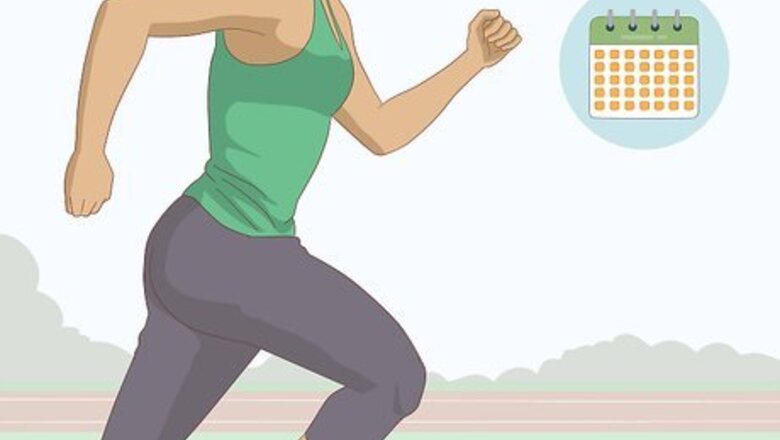
views
- Try to exercise daily and avoid sitting for very long periods of time. Flex your legs and shift your position occasionally if you have to stay seated.
- Focus on positive lifestyle choices like maintaining a healthy weight and quitting smoking to reduce your risk of blood clots.
- Reduce your alcohol and salt consumption. Try to eat at least 1 gram of Omega-3 fatty acids daily.
- Remember that a blood clot will not clear on its own or without medical treatment. Home remedies can supplement your treatment and help prevent future clots.
Stimulating Blood Flow
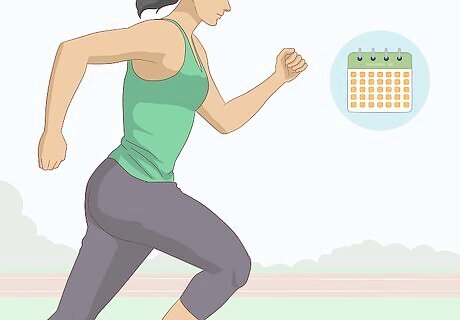
Exercise every day to keep your blood flowing. Regular exercise helps prevent your blood from pooling and causing clots. If you don’t work out regularly, then put yourself on a new schedule and get some exercise 5-7 days per week. Aerobic exercises that get your heart pumping faster are best, so focus on running, biking, swimming, or cardio workouts for the best results. You don’t have to exercise hard. Even a daily walk is good to lower your risk for blood clots. In general, experts recommend getting 30 minutes of exercise at least 5 days during the week, for a total of 150 minutes per week. This should be enough activity to lower your blood clot risk.

Start moving around again as soon as you can if you’ve had surgery. People who have recently had surgery or an injury are at a higher risk for blood clots because they have to stay immobile for a while afterward. As soon as you’re feeling up to it, get up and move around every day. This reduces your risk for clots. Even if you can only get up and walk to the bathroom or another room of your home, that’s a good start.
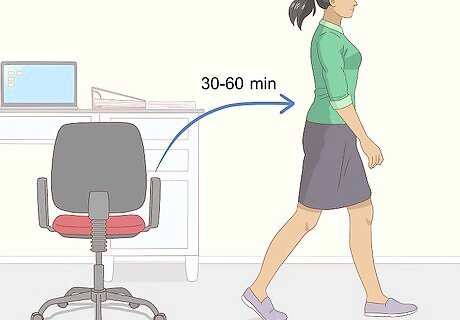
Get up and walk every 30-60 minutes if you sit for a long time. Whether you work at a desk or are taking a long trip, prolonged sitting can put you at a higher risk for blood clots. Once or twice every hour, get up, walk around, and stretch a bit to stimulate blood flow. Even a 5 minutes of walking per hour reduces your clotting risk. If you’ve had clots in the past, you may need to move around more often. Talk to your doctor for their recommendation. The reverse is true as well. If you stand in one place for a long time, you could also be at risk for clots. Try sitting down every hour or stretching out regularly to stay mobile.
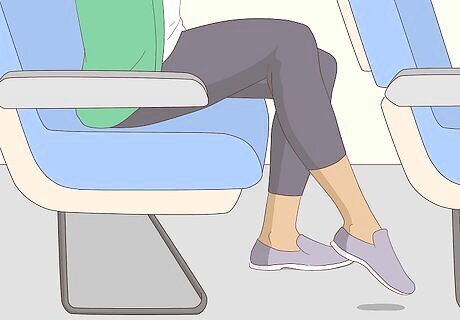
Flex your feet and legs if you’re unable to get up and walk. If you can’t get up, like if you’re on a plane, then you can still take some steps to stimulate blood flow. Try wiggling your toes, flexing your ankles, and moving your legs up and down as much as you can. Even this little bit of motion can help prevent clots. If you have enough room, try pulling your legs up to your chest as well. This stretches out your whole lower body.
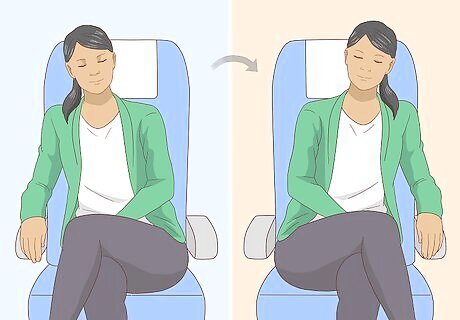
Shift your sitting position often if you have to stay seated. This is another good way to stay moving if you can’t get up. Try shifting your seating position as often as you can. Switch the pressure from one side of your body to the other, lean on your armrest, lift one leg, and so on. This prevents blood from pooling in one spot.
Lifestyle Changes
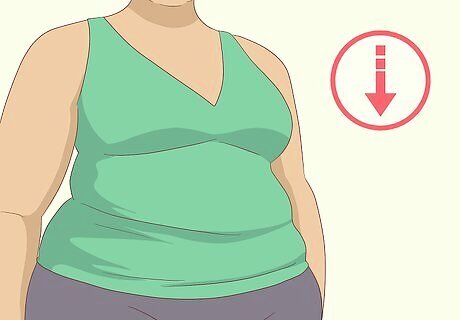
Lose weight if you have to. Being overweight or obese puts you at a higher risk for developing blood clots. If you’re overweight, talk to your doctor and determine an ideal bodyweight for yourself. Then design an exercise and diet regimen to reach that goal. Losing weight can also lower your blood pressure, which reduces your risk of blood clots further. Avoid crash or extreme dieting. This is bad for your health and people often regain weight after they stop an extreme diet.
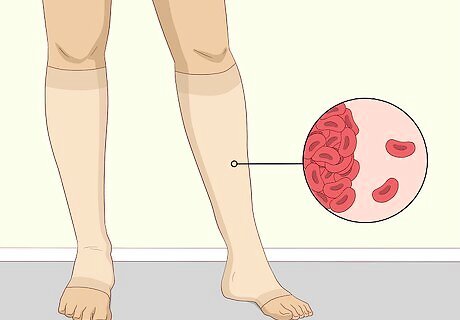
Wear compression stockings if you’ve had clots in your legs. These stockings help maintain circulation in your legs. Doctors usually recommend them for people at a higher risk of clots or who have had leg clots in the past. If your doctor suggests these, then follow their recommendations on wearing them correctly. People often wear compression stockings if they’ll be seated for a long time, like on a plane. Even if you don’t wear them all the time, your doctor might tell you to wear them during flights. Compression stockings are only meant to prevent clots from forming, not treat active ones. Wait until your initial clot clears to use them.
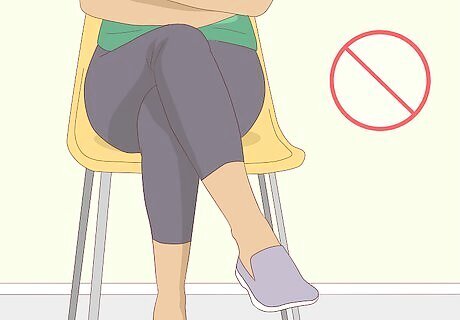
Avoid sitting with your legs crossed. Keeping your legs crossed cuts off circulation in your lower body and puts you at a higher risk for leg clots. Only sit with your legs crossed for a few minute at a time, then uncross them to keep your circulation up. After you uncross your legs, try wiggling your feet around a bit to stimulate blood flow again.
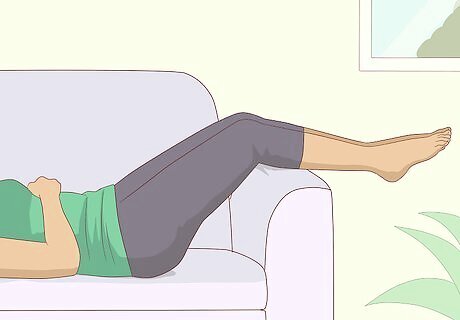
Elevate your legs above your heart to stimulate blood flow. Elevating your legs keeps your circulation up and prevents your blood from pooling in your legs. If you’re sitting on a couch, try laying back and propping your feet up on the armrest or a pillow. You can also elevate the end of your bed to keep your legs up while you sleep. However, don’t place a pillow under your knees to do this. This could cut off circulation.
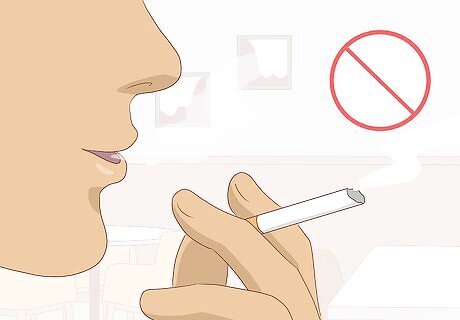
Quit smoking to reduce your risk of clotting. Smoking increases your risk of developing clots, along with numerous other health problems. If you smoke, it’s best to quit as soon as possible. If you don’t smoke, then don’t start in the first place. Secondhand smoke could also cause health problems, so don’t let anyone smoke in your home.
Dietary Tips

Practice a healthy, balanced diet. A healthy diet helps you maintain a healthy bodyweight, lower your blood pressure and cholesterol, and improve your cardiovascular health. This all helps prevent clotting, so if you have to, make some healthy dietary changes to improve your diet. Include plenty of produce in your diet for vitamins, minerals, and antioxidants. Have at least 5 servings of fruits and vegetables each day. Get your proteins from lean sources like fish, poultry, beans, or nuts. Switch to whole-wheat products to reduce your intake of simple carbohydrates. Avoid fatty, fried, salty, or processed foods as much as possible. These can all raise your weight and blood pressure.
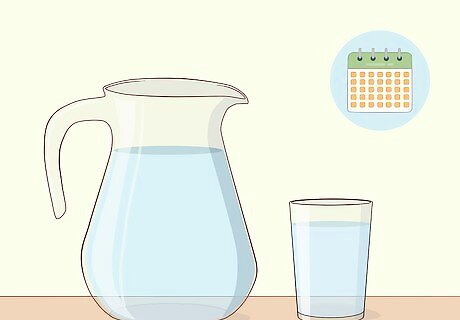
Drink plenty of fluids to prevent dehydration. Dehydration prevents your blood from flowing well, which could increase your risk for clots. Drink plenty of water every day to keep yourself hydrated and lower your risk of clotting. The common recommendation is for everyone to drink 6-8 glasses of water per day, which should keep most people hydrated. However, if you feel thirsty or your urine is dark yellow, then drink some more water.
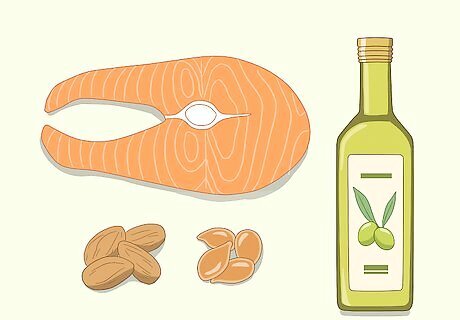
Eat at least 1 g of omega-3s each day. Omega-3s improve your cardiovascular health and could help prevent clots. The main sources for these nutrients are oily fish like salmon, mackerel, sardines, and herrings. You can also get it from nuts, seeds, and vegetable oils. If you’re unable to get enough omega-3s from your regular diet, you can also take a fish oil or algae supplement for a higher dose. Talk to your doctor and follow their recommendations for the right supplement.

Follow a low-salt diet. Salt constricts your blood vessels and raises your blood pressure, all of which could put you at a higher risk for clots. Try to avoid very salty foods like fried or processed meals, and don’t add more salt to your food to keep your intake under control. The official recommendation for general health is to keep your sodium intake below 2,300 mg per day. If you’ve had clots in the past, your doctor may restrict your sodium intake further.

Limit your vitamin K intake to 90-120 mcg per day. While your body needs vitamin K, this nutrient helps your blood coagulate. If you’ve had blood clots in the past, then excessive vitamin K could put you at a higher risk for clotting. You’re your vitamin K intake within the recommended 90-120 mcg per day to avoid any problems. Leafy green vegetables are very high in vitamin K, so only have 1 serving per day. Then switch to vegetables with less vitamin K like beans or carrots. High vitamin K levels could interact with blood thinners like warfarin. Talk to your doctor if you’re on this medication to determine a safe vitamin K level.

Drink alcohol in moderation. Alcohol can cause dehydration, which puts you at a higher risk for clotting. If you drink, limit yourself to 1-2 alcoholic drinks per day to avoid problems. Binge drinking is harmful as well. Even if you only have 6 drinks in a week, having them all on the same day will dehydrate you. If you’ve had clots in the past, your doctor might recommend that you cut alcohol out of your diet entirely. Follow these instructions if your doctor suggests this.

















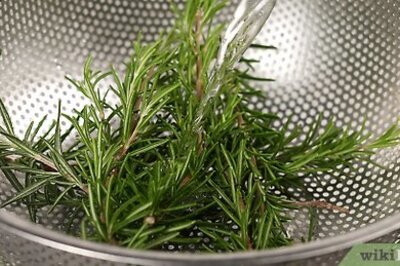
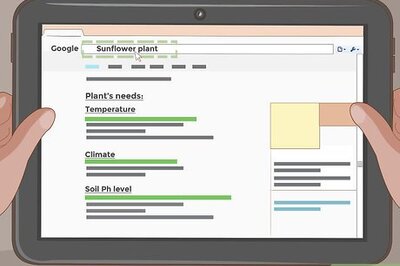

Comments
0 comment